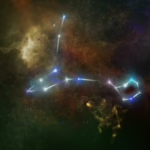The Quantum Leap and Beyond: Navigating the Frontiers of General Physics
General physics, often considered the bedrock of scientific understanding, provides the fundamental laws and principles governing the universe around us. From the elegant dance of celestial bodies to the intricate behavior of subatomic particles, its principles underpin every scientific discipline. However, the label “general” belies the ongoing evolution and revolution within this field. While classical mechanics, electromagnetism, thermodynamics, and optics still form its core, modern physics, driven by quantum mechanics and relativity, has pushed the boundaries of our knowledge, challenging our intuitions and opening up entirely new avenues of exploration. This article delves into the recent breakthroughs and ongoing challenges in general physics, exploring how these advancements are reshaping our understanding of the cosmos and paving the way for future technologies.
I. The Enduring Power of Classical Physics: Refinements and Applications
Despite the profound impact of quantum mechanics and relativity, classical physics remains incredibly relevant and continues to be refined and applied in numerous domains. [modern_footnote_source: “Classical Mechanics,” by Herbert Goldstein, Charles Poole, and John Safko, is a definitive resource on classical mechanics, highlighting its enduring importance in diverse fields like engineering and astrophysics.]
- Computational Fluid Dynamics (CFD): The Navier-Stokes equations, derived from classical mechanics, describe the motion of viscous fluids. Modern CFD techniques, leveraging powerful computers and sophisticated algorithms, allow us to simulate complex fluid flows in areas like aerodynamics, weather forecasting, and cardiovascular research. Advances in turbulence modeling are constantly improving the accuracy and reliability of these simulations. [modern_footnote_source: “Turbulence: The Legacy of A.N. Kolmogorov,” by Uriel Frisch, details the ongoing challenges in understanding and modeling turbulent flows, which are prevalent in many real-world applications.]
- Materials Science and Engineering: Classical mechanics and thermodynamics are crucial for understanding the mechanical and thermal properties of materials. Finite element analysis (FEA), based on classical elasticity theory, is widely used in engineering design to predict the behavior of structures under stress, ensuring their safety and reliability. Recent advancements focus on modeling complex material behaviors, such as plasticity, creep, and fracture, allowing for the design of more durable and efficient materials. [modern_footnote_source: “Fundamentals of Materials Science and Engineering,” by William D. Callister Jr. and David G. Rethwisch, provides a comprehensive overview of the principles and applications of materials science.]
- Astrophysics and Cosmology: While general relativity is essential for describing gravity on a cosmological scale, classical mechanics still plays a vital role in understanding the dynamics of planetary systems, stellar evolution, and galactic structure. N-body simulations, which track the gravitational interactions of numerous particles, are used to study the formation and evolution of galaxies and the dynamics of star clusters. These simulations rely on classical mechanics to accurately model the gravitational forces between individual objects. [modern_footnote_source: “Galactic Dynamics,” by James Binney and Scott Tremaine, provides a detailed account of the application of classical mechanics to understanding the structure and dynamics of galaxies.]
- Precision Measurement and Instrumentation: Classical physics principles are fundamental to the design and operation of countless instruments and measurement techniques. From high-precision accelerometers used in inertial navigation systems to advanced optical microscopes, classical physics provides the foundation for accurate and reliable measurements. The development of new sensors and instruments continues to push the boundaries of precision and accuracy. [modern_footnote_source: “Principles of Measurement and Instrumentation,” by Alan S. Morris, is a valuable resource for understanding the underlying principles of various measurement techniques.]
II. Quantum Mechanics: Unveiling the Mysteries of the Microscopic World
Quantum mechanics, the theory describing the behavior of matter and energy at the atomic and subatomic levels, has revolutionized our understanding of the universe and led to numerous technological breakthroughs. [modern_footnote_source: “Quantum Mechanics,” by David J. Griffiths and Darrell F. Schroeter, is a widely used textbook providing a comprehensive introduction to the principles of quantum mechanics.]
- Quantum Computing: Quantum computers leverage the principles of quantum mechanics, such as superposition and entanglement, to perform calculations that are impossible for classical computers. Significant progress has been made in building quantum computers with increasing numbers of qubits (quantum bits). While still in its early stages, quantum computing has the potential to revolutionize fields like medicine, materials science, and cryptography. The development of robust and scalable quantum computers remains a major challenge. [modern_footnote_source: “Quantum Computation and Quantum Information,” by Michael A. Nielsen and Isaac L. Chuang, is a seminal work on the theory and applications of quantum computing.]
- Quantum Cryptography: Quantum cryptography uses the laws of quantum mechanics to secure communication channels. Quantum key distribution (QKD) protocols allow two parties to establish a shared secret key that is provably secure against eavesdropping. While QKD systems are commercially available, challenges remain in extending their range and improving their robustness. [modern_footnote_source: “Quantum Cryptography,” by Richard Jozsa and Bruce Shawyer, provides an overview of the principles and applications of quantum cryptography.]
- Quantum Sensing: Quantum sensors exploit the extreme sensitivity of quantum systems to measure physical quantities with unprecedented precision. These sensors have applications in diverse fields, including medical imaging, environmental monitoring, and fundamental physics research. Examples include atomic clocks, superconducting quantum interference devices (SQUIDs), and nitrogen-vacancy (NV) center magnetometers. [modern_footnote_source: “Quantum Sensing and Metrology,” edited by Vladimir Man’ko, Rosa Branca, and Hidehiro Yonezawa, explores the various types of quantum sensors and their applications.]
- Quantum Materials: The study of quantum materials focuses on materials whose properties are governed by quantum mechanical effects. These materials often exhibit exotic phenomena, such as superconductivity, topological phases, and quantum magnetism. Research in this area is driven by the potential for developing new technologies based on these unique properties. The discovery and understanding of novel quantum materials remains a major focus of research. [modern_footnote_source: “Quantum Materials: A Modern Perspective,” by Piers Coleman, provides a comprehensive overview of the field of quantum materials.]
- Fundamental Tests of Quantum Mechanics: Despite its remarkable success, quantum mechanics continues to be tested rigorously. Experiments are designed to probe the foundations of quantum mechanics, such as the validity of superposition, entanglement, and quantum nonlocality. These tests often involve complex experimental setups and require extremely precise measurements. [modern_footnote_source: “Speakable and Unspeakable in Quantum Mechanics,” by J.S. Bell, presents a critical analysis of the foundations of quantum mechanics and the interpretation of its counterintuitive predictions.]
III. Relativity: Exploring Gravity and the Fabric of Spacetime
Einstein’s theories of relativity, both special and general, have profoundly changed our understanding of gravity, spacetime, and the universe at large. [modern_footnote_source: “Relativity: The Special and the General Theory,” by Albert Einstein, is a classic introduction to the principles of relativity.]
- Gravitational Waves: The direct detection of gravitational waves by the Laser Interferometer Gravitational-Wave Observatory (LIGO) and Virgo collaborations has opened a new window into the universe. Gravitational waves are ripples in spacetime caused by accelerating massive objects, such as black holes and neutron stars. Studying these waves provides valuable information about the most extreme events in the cosmos. [modern_footnote_source: “Gravitational Waves: Sources and Detectors,” by Michele Maggiore, is a comprehensive resource on the theory and detection of gravitational waves.]
- Black Hole Physics: Black holes, regions of spacetime where gravity is so strong that nothing, not even light, can escape, are fascinating objects that continue to challenge our understanding of physics. Research focuses on understanding the properties of black holes, such as their event horizon, singularity, and accretion disks. The Event Horizon Telescope (EHT) collaboration has captured the first image of a black hole, providing direct evidence of their existence and validating the predictions of general relativity. [modern_footnote_source: “Black Holes: The Reith Lectures,” by Stephen Hawking, offers a popular account of the physics of black holes.]
- Cosmology and the Early Universe: General relativity is the foundation of modern cosmology, providing the framework for understanding the evolution of the universe from the Big Bang to the present day. Cosmological models based on general relativity can explain the observed expansion of the universe, the cosmic microwave background radiation, and the formation of large-scale structures. Current research focuses on understanding the nature of dark matter and dark energy, which make up the majority of the universe’s mass-energy content. [modern_footnote_source: “Modern Cosmology,” by Scott Dodelson and Fabrizio Vernizzi, provides a comprehensive overview of modern cosmology, including the theoretical framework and observational evidence.]
- Tests of General Relativity: General relativity has passed numerous experimental tests with flying colors. These tests include measurements of the gravitational redshift, the bending of light by massive objects, and the precession of planetary orbits. However, scientists continue to search for deviations from general relativity that could point to new physics beyond the Standard Model. [modern_footnote_source: “Was Einstein Right?: Putting General Relativity to the Test,” by Clifford M. Will, explores the various tests of general relativity and their implications.]
- Relativistic Positioning Systems: The Global Positioning System (GPS) relies on highly accurate atomic clocks on satellites orbiting the Earth. General relativity predicts that time passes slower in stronger gravitational fields, meaning that clocks on the satellites experience time dilation compared to clocks on the Earth’s surface. Special relativity also contributes a smaller time dilation effect due to the satellites’ velocity. These relativistic effects must be accounted for in order for GPS to function accurately. [modern_footnote_source: “Relativity and GPS,” by Neil Ashby, provides a detailed explanation of the role of relativity in GPS technology.]
IV. Connecting the Dots: The Quest for a Unified Theory
One of the most ambitious goals in modern physics is to develop a unified theory that combines all the fundamental forces of nature into a single framework. This includes unifying quantum mechanics with general relativity, a long-standing challenge that has eluded physicists for decades.
- String Theory: String theory proposes that the fundamental constituents of the universe are not point-like particles but tiny, vibrating strings. String theory can potentially unify all the fundamental forces, including gravity, and may provide a consistent quantum theory of gravity. However, string theory is highly complex and has not yet been directly tested experimentally. [modern_footnote_source: “The Elegant Universe: Superstrings, Hidden Dimensions, and the Quest for the Ultimate Theory,” by Brian Greene, is a popular introduction to string theory.]
- Loop Quantum Gravity: Loop quantum gravity is another approach to quantizing gravity. It proposes that spacetime itself is quantized, consisting of discrete loops of spacetime fabric. Loop quantum gravity offers a different perspective on the nature of spacetime and may provide insights into the early universe and the nature of black holes. [modern_footnote_source: “Three Roads to Quantum Gravity,” by Lee Smolin, provides an overview of string theory, loop quantum gravity, and other approaches to quantum gravity.]
- Quantum Field Theory: Quantum field theory (QFT) combines quantum mechanics with special relativity to describe the behavior of fundamental particles and forces. QFT is the theoretical framework for the Standard Model of particle physics, which successfully describes the known elementary particles and their interactions. However, the Standard Model does not include gravity, highlighting the need for a more complete theory. [modern_footnote_source: “Quantum Field Theory in a Nutshell,” by A. Zee, provides a concise introduction to the principles and applications of quantum field theory.]
- Beyond the Standard Model: There is growing evidence that the Standard Model of particle physics is incomplete. This evidence includes the existence of dark matter and dark energy, the neutrino mass, and the unexplained matter-antimatter asymmetry in the universe. Scientists are actively searching for new particles and interactions that could extend the Standard Model and address these outstanding questions. [modern_footnote_source: “Particle Physics: A Very Short Introduction,” by Frank Close, offers a concise overview of particle physics and the search for physics beyond the Standard Model.]
- The Role of Mathematics: The pursuit of a unified theory heavily relies on advanced mathematical concepts. From differential geometry used in general relativity to the complex algebras employed in string theory, mathematics provides the language and tools to formulate and explore these profound theories. Breakthroughs in mathematical physics often pave the way for new advances in our understanding of the universe. [modern_footnote_source: “Mathematics for Physics,” by Michael Stone and Paul Goldbart, illustrates the essential mathematical tools used in modern physics.]
V. Emerging Trends and Future Directions
The field of general physics is constantly evolving, driven by new experimental discoveries, theoretical developments, and technological advancements. Several emerging trends and future directions promise to shape the future of physics research.
- Multimessenger Astronomy: Combining observations from different types of signals, such as electromagnetic radiation, gravitational waves, and neutrinos, allows for a more complete understanding of astrophysical phenomena. Multimessenger astronomy has already yielded valuable insights into the sources of gravitational waves and the nature of cosmic rays.
- Artificial Intelligence and Machine Learning: AI and machine learning are increasingly being used in physics research to analyze large datasets, develop new algorithms, and automate experimental procedures. These techniques have the potential to accelerate scientific discovery and enable new types of experiments.
- Open Science and Collaboration: The increasing trend towards open science and collaboration is fostering greater sharing of data, code, and research findings. This allows for more efficient use of resources and promotes faster progress in physics research.
- Interdisciplinary Research: Many of the most exciting advances in physics are occurring at the interface with other disciplines, such as biology, chemistry, and computer science. Interdisciplinary research allows for the application of physics principles to solve problems in other fields and to develop new technologies.
- Quantum Information Theory: This burgeoning field explores the fundamental limits of information processing within the framework of quantum mechanics. It not only underpins the development of quantum computers and communication systems but also provides new perspectives on the nature of information itself and its relation to entropy and thermodynamics. [modern_footnote_source: “Quantum Information Theory,” by Mark M. Wilde, offers a comprehensive and rigorous treatment of this rapidly evolving field.]
VI. Conclusion
General physics, far from being a static collection of established principles, remains a vibrant and dynamic field. The ongoing refinements of classical physics, the groundbreaking discoveries in quantum mechanics and relativity, and the relentless pursuit of a unified theory are pushing the boundaries of our knowledge and transforming our understanding of the universe. The challenges are significant, but the potential rewards – a deeper understanding of the fundamental laws of nature and the development of revolutionary technologies – are immense. As we continue to explore the frontiers of physics, we can expect further paradigm shifts and transformative discoveries that will reshape our world in profound ways. The quantum leap is just the beginning of an ongoing journey into the unknown.


























Add Comment